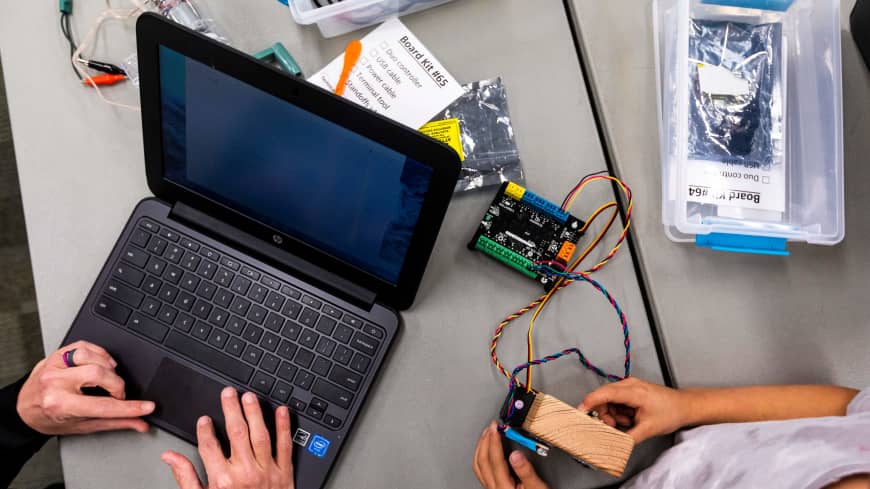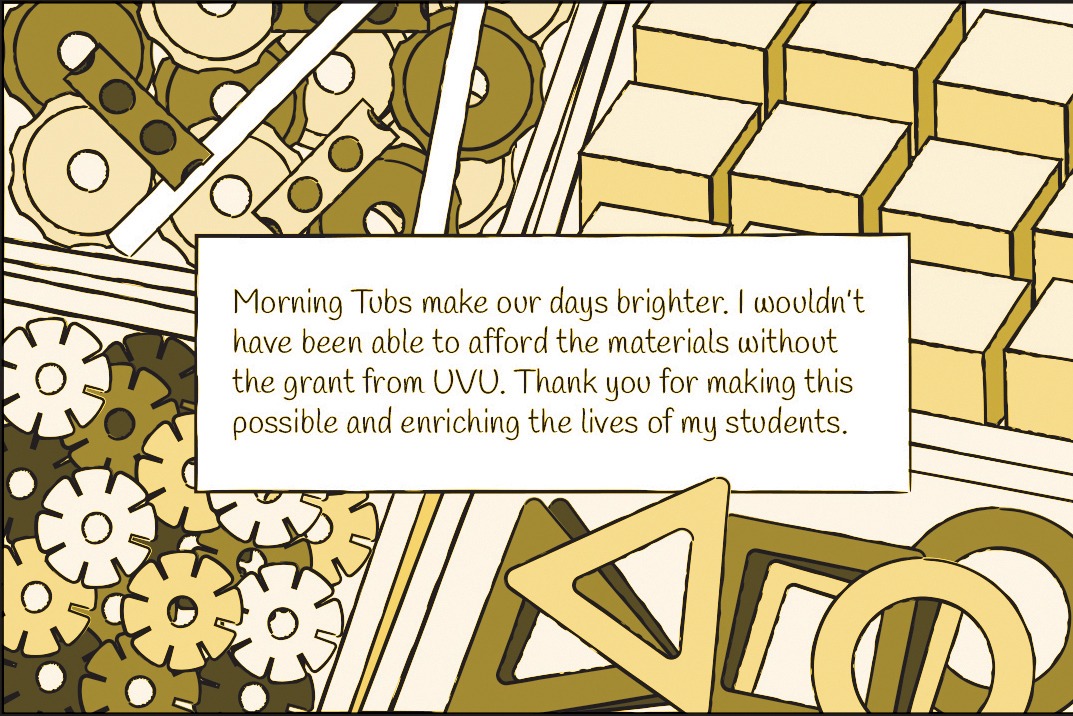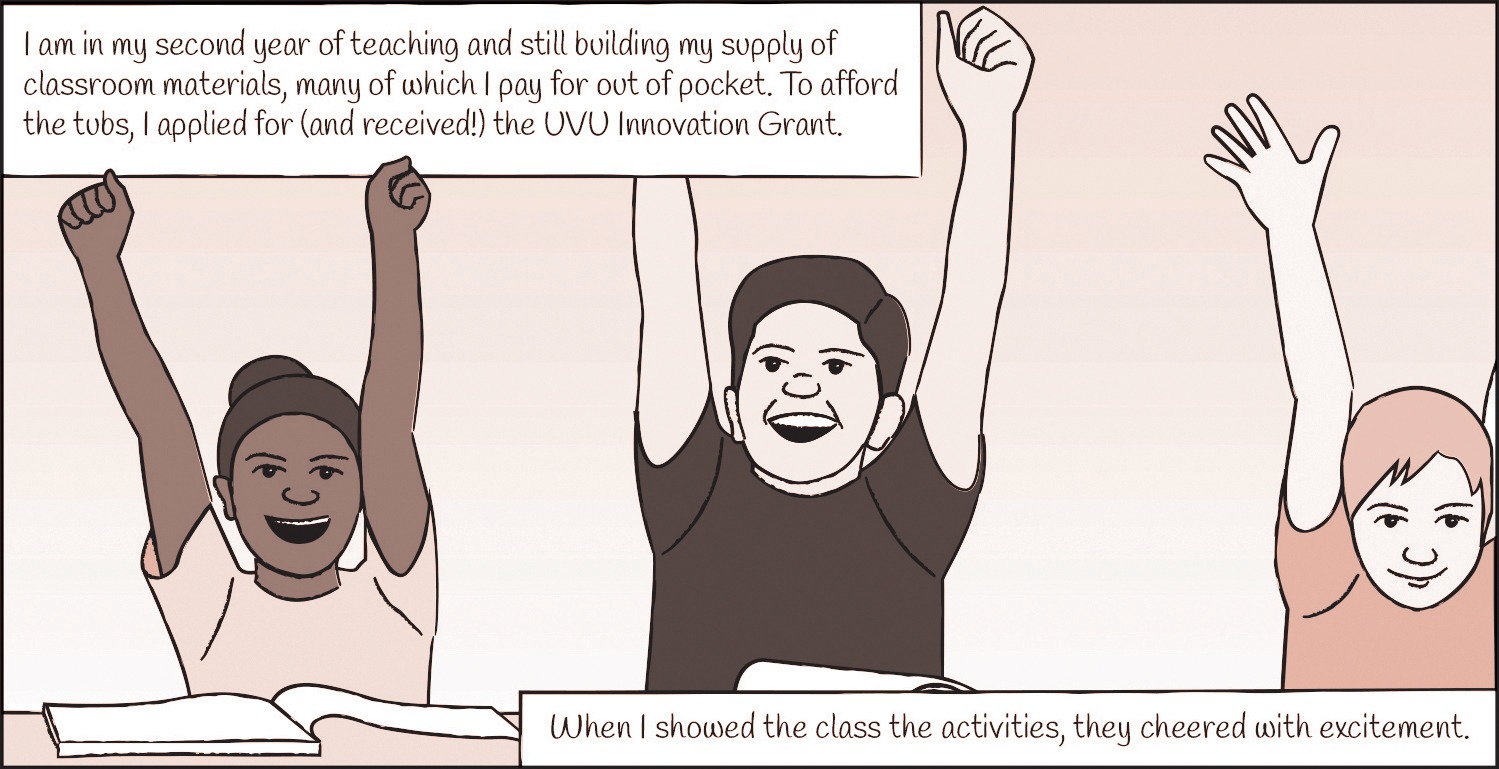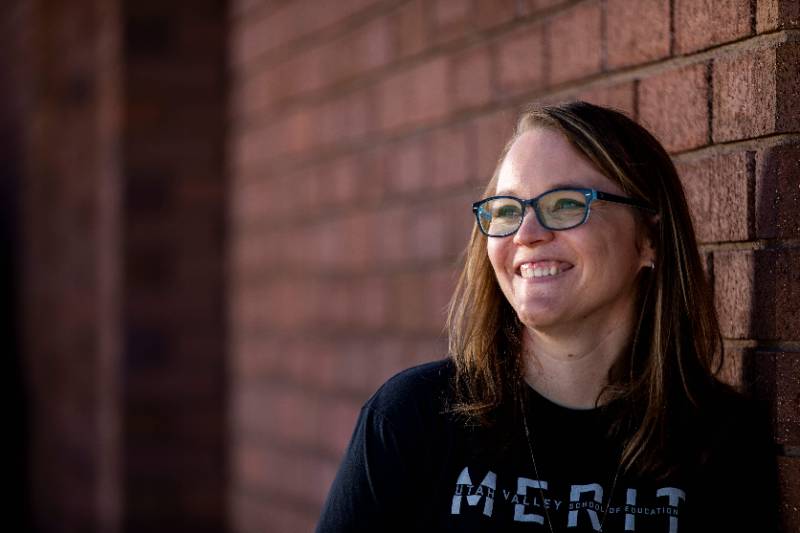
Loading Directory data....
Every gift is meaningful and appreciated. You are welcome to make a donation of any size to support our students. If you'd like to create a legacy, please consider signing up for a monthly recurring gift that will have a lasting impact on future students and educators. Together, we uplift, provide exceptional care, and inspire students to be their very best.
For more information on ways to establish a legacy gift, such as through a will, bequest, trust, annuity, or IRA rollover, please visit uvgift.org.
If you prefer to donate via check, please make checks payable to UVU Foundation and mail to the address below. Please list "Enhance Teaching Innovation" in the memo field.
UVU Foundation
800 W University Pkwy MS 111
Orem, UT 84058
Mrs. Teneille Ringer
Second grade teacher at Ridgeline Elementary School in Highland, UT
Utah Valley University School of Education alumni, class of 2019
As winter turned to spring and the leaves on the trees started to slowly bud, my second-grade students became increasingly less interested in our morning routine. Usually, when they first get to class, I have them work independently to wake up their brains while I take attendance and prepare for the first lesson of the day. But that was not working anymore. They wanted to talk. They needed to move. It seemed vital to them to share everything and anything with each other.
I understood – they needed to connect. But we still needed a morning exercise. I saw an idea for Morning Tubs on Pinterest. It was a simple concept: Tupperware containers filled with toys, puzzles, blocks, and Legos. I envisioned tubs with materials based in science, technology, engineering, art, and math. I thought, “if I had the resources, this would be the perfect solution.” But I am in my second year of teaching with hardly enough materials for my normal lessons and no budget.
So I applied to and received the Utah Valley University (UVU) Innovation Grant, which is exclusive to UVU alumni. When I first told the class we were going to try something new in the mornings, they were curious. When I showed them the activities, they roared with excitement.
The tubs give them a way to learn, build critical thinking skills, and express their creativity. Some tubs hold linking objects and building blocks. Others contain origami materials, beads, and stamps. There are tubs that require teamwork and others that offer independent activities. We rotate so everyone gets the chance to try a new challenge each day.
A few weeks ago, I was standing in front of my classroom door, greeting each student as I do every day. I spotted one of my students and noticed he didn’t have his mask. When I asked told him, he reached his small hands up to his face and patted his cheeks in disbelief.
‘I forgot!’ he said.
“No problem! Will you run to the office to grab one?” I asked.
He looked up at me with red cheeks and a panicked look. Tears started to pour from his eyes. I was surprised. He had never had a problem wearing a mask before. But it wasn’t the mask. He was worried he was going to miss Morning Tub time.
I assured him we wouldn’t start until he returned. He took off in a sprint. I was struck by how much the new morning time routine meant to him, and to all my students. Granting them time to connect after emerging from a year of quarantine and distance-learning has made a tremendous difference in their lives. The class is attentive and relaxed after they have a chance to interact, play, and learn together.
Morning Tubs make our days brighter. I wouldn’t have been able to afford the materials without the UVU Innovation Grant. Thank you for making this possible and for enriching the lives of my students.”



Learning was never easy for Chelsey Beck. In second grade, she was diagnosed with ADHD and started receiving extra learning interventions, but, even with extra help, her education had come to a standstill. It wasn’t until her eighth-grade year, when she was diagnosed with central auditory processing disorder (CAPD) and dyslexia, that things started to change.
Lagging behind several grade levels, Chelsey had practically given up on learning — that is, until Chelsey found the extra help, she needed in Mrs. Whittekiend’s class. “At first, I hated Mrs. Whittekiend’s guts,” Chelsey said. “She used a lot of tough love. For example, we made a deal that if I scored 100% on my spelling vocabulary tests, she’d buy me a Diet Pepsi. But if I missed a single one, I had to buy her a Diet Coke.”
After graduating from high school, Chelsey saw Utah Valley University as the perfect fit for her to continue her education. “Because of my setback in elementary school, my ACT scores were terrible,” she said. “If it weren’t for UVU, I never would have gone to college.”
Once at UVU, Chelsey decided to pursue a major in secondary education. She graduated with her bachelor’s degree in 2012 and quickly began teaching at Springville High School. In her first seven years of teaching she taught 14 different subjects, one of which was computer science.
“I did not go to school to become a computer programmer, so I was a bit apprehensive when I got the assignment,” she said. “But when I started exploring the subject, I fell in love with it and decided I wanted to complete a master’s degree in teaching it.”
In collaboration with the School of Education’s Creative Learning Studio, Chelsey’s master’s thesis focused on developing inquiry-based computer science curriculum for K-12 schools. With two School of Education professors, Chelsey created a seven-week curriculum for UVU Prep (UVU’s STEM summer program for middle and junior high students) and integrated it into her class at Springville High. “It was the weirdest thing,” said Chelsey. “Pretty soon I started getting labeled as one of the top computer science teachers in the state and was getting asked to present at all these conferences.”
In spring 2019, Chelsey completed her master’s degree with her seventh endorsement. Chelsey was also recruited by Provo School District to develop a K-12 feeder system to teach students computer science beginning in kindergarten.
“My parents got me the skills and Mrs. Whittekiend challenged me. They helped me see that I am not stupid. If I put in the work, I could accomplish great things,” says Chelsey. “It took me until my senior year of high school to understand how I learn — but ever since then, I haven’t stopped. I learned if I put in the work, I could accomplish great things.”